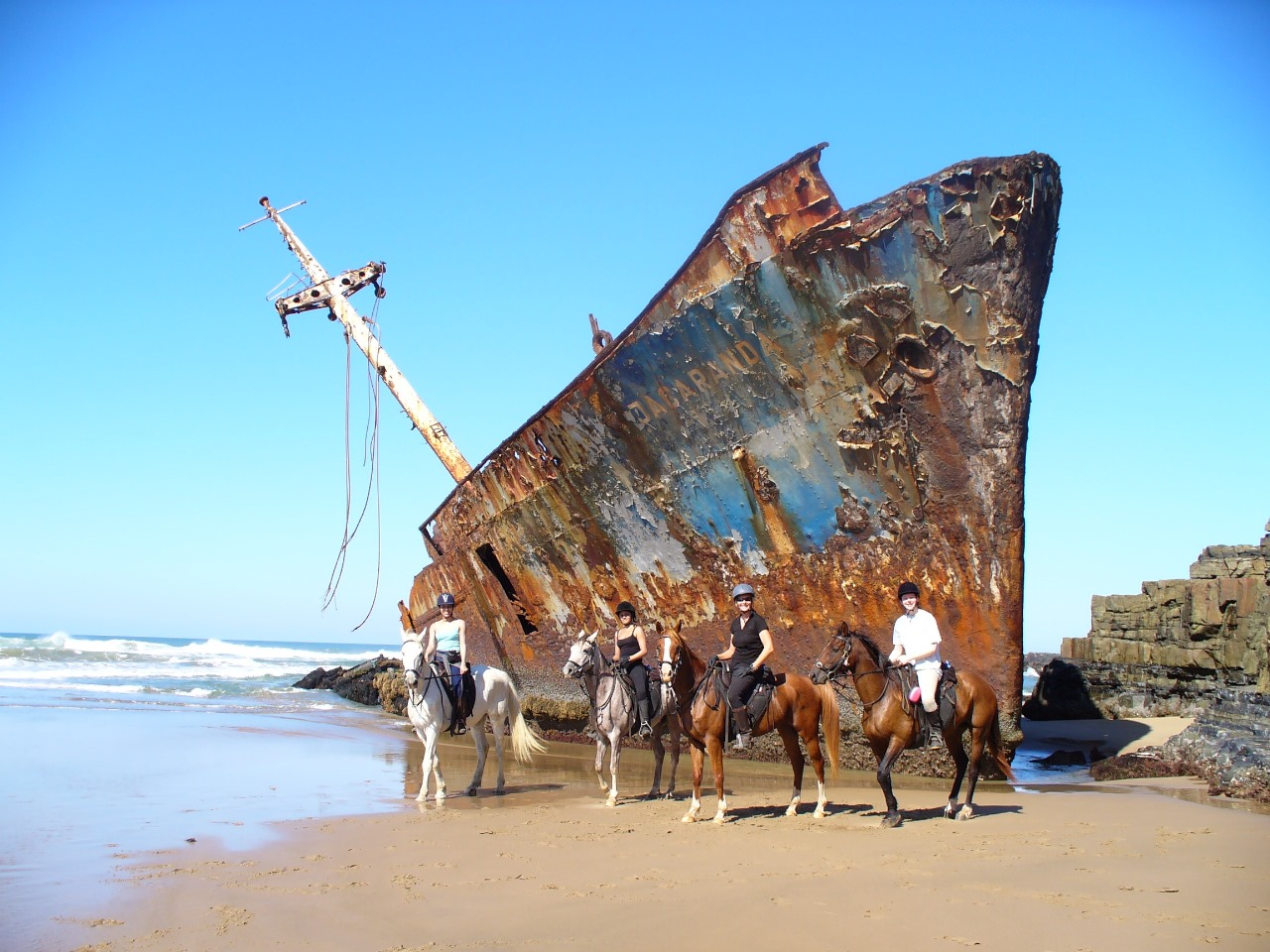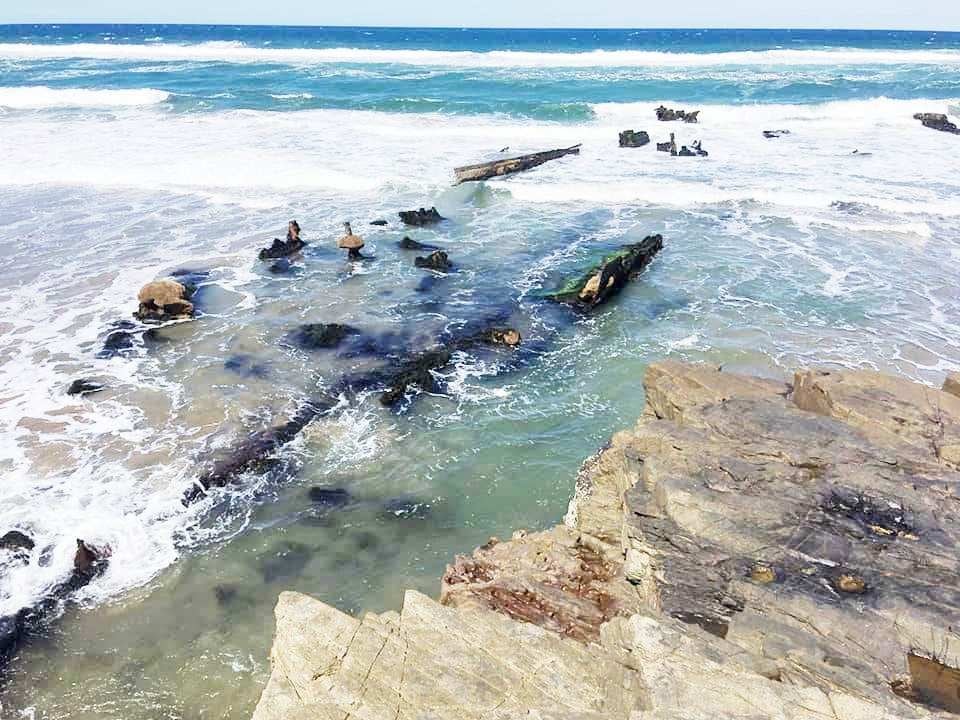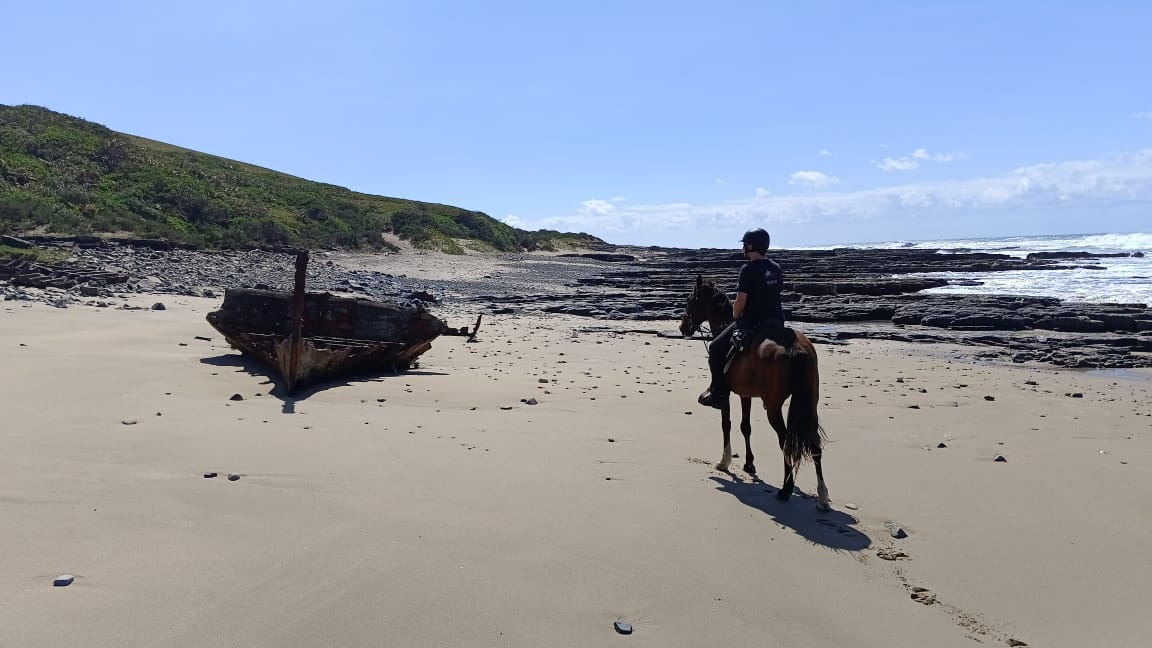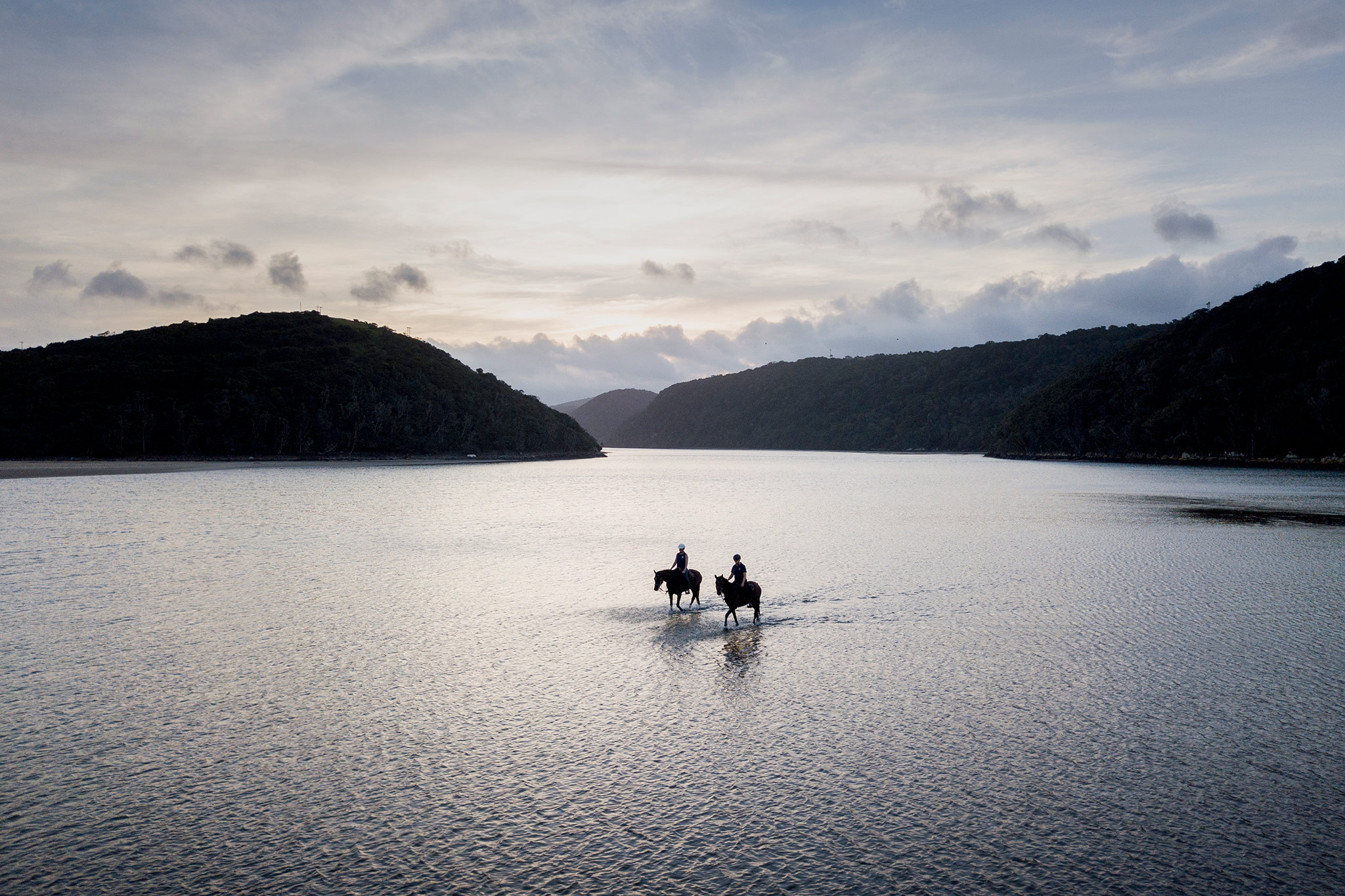Nicky Hoseck
Shipwrecks Of The Wild Coast:
A Ride Through History

While that’s the official version of events, others whisper of dark secrets. Local legends speak of a captain so distracted by a certain woman (apparently not his wife, even though she was among the crew members who survived the wreck) that he left a somewhat tipsy deckhand in charge of steering. Others say that, far from being empty of cargo, the Jacaranda was packed to the gills with illegal firearms that were being smuggled into South Africa to further the ANC’s fight against apartheid.
These alternative narratives have never been proven, but equally, they've never been invalidated. Instead, they continue to circulate with ever-more outlandish embellishments, keeping the memory of the Jacaranda alive long after the sea has claimed the last of its physical remains.

The Frontier: A Mystery Wrapped in Time
Unlike the Idomene, the Frontier remains surprisingly intact, despite being wrecked some 85 years ago. Sadly, despite searching high and low, there's no documentation about this particular wreck. Confusingly enough, another ship named Frontier ran aground near Kidd's Beach in 1957 but she was declared a total loss.
The only reference to the Frontier shipwreck is on the map of the coastline displayed at Kob Inn, where the wreck's location is marked, along with the date of its demise - 1939. This lack of historical record leaves the Frontier's story open to imagination, inviting speculation about its origins and fate. The ship's most intriguing feature - the remnants of a brick wall visible among its ruins - only deepens the mystery.
Perhaps the Frontier was a unique vessel, with a brick structure designed to house specialised equipment or to insulate a specific type of cargo. Without concrete evidence, the Frontier stands as a testament to the many mysteries of the Wild Coast.









